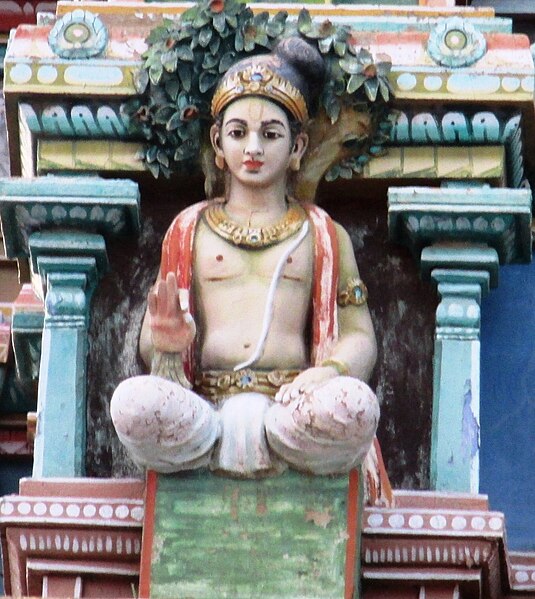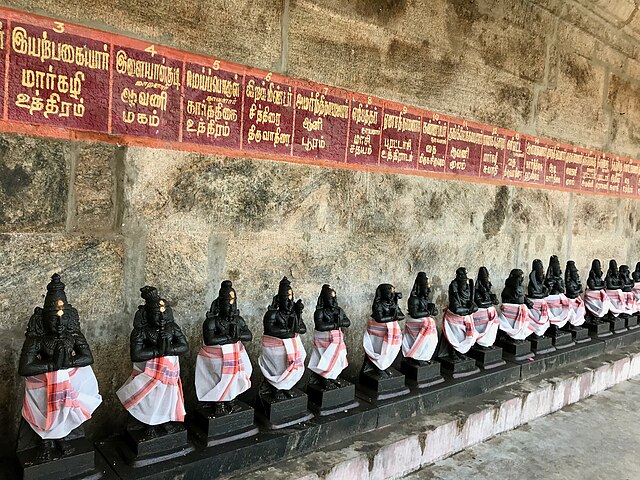The Bhakti movement was a significant religious movement in medieval Hinduism that sought to bring religious reforms to all strata of society by adopting the method of devotion to achieve salvation. Originating in Tamilakam during 6th century CE, it gained prominence through the poems and teachings of the Vaishnava Alvars and Shaiva Nayanars before spreading northwards. It swept over east and north India from the 15th century onwards, reaching its zenith between the 15th and 17th century CE.
The Vaishnavite Saint Nammalvar. He is one of the most prominent of the 12 Alvars of the Vaishnavism Bhakti movement.
A copper alloy sculpture of a Shiva Bhakti practitioner from Tamil Nadu (11th Century or later).
Nammalvar (c. 798 CE), one of the Tamil Alvars and author of the Tiruvaymoli and the Tiruviruttam
Nayanars gallery at the Thiruthalinathar Shiva temple, Tiruppathur, a Shaiva Siddhanta temple. One important foundation of the Shaiva Siddhantha tradition is the Shaiva bhakti of the Nayanars.
Bhakti is a term common in Indian religions which means attachment, fondness for, devotion to, trust, homage, worship, piety, faith, or love. In Indian religions, it may refer to loving devotion for a personal God, a formless ultimate reality or for an enlightened being. Bhakti is often a deeply emotional devotion based on a relationship between a devotee and the object of devotion.
Nammalvar, considered the most prominent of the twelve Alvars (Tamil poet saints c. 5th to 9th century CE) whose hymns are compiled in the Nālāyira Divya Prabandham
Bengal illustration of the 15th century Krishna bhakta Chaitanya Mahaprabhu performing kirtan, devotional chanting and dancing, in the streets of Nabadwip, Bengal.
Meera (Mirabai) (circa 1498-1546) was one of the most significant poet-saints in the Vaishnava bhakti movement.
The Bodhi Tree under which Gautama Buddha attained Enlightenment has been a major site of Buddhist bhakti since the earliest period of Buddhism.








